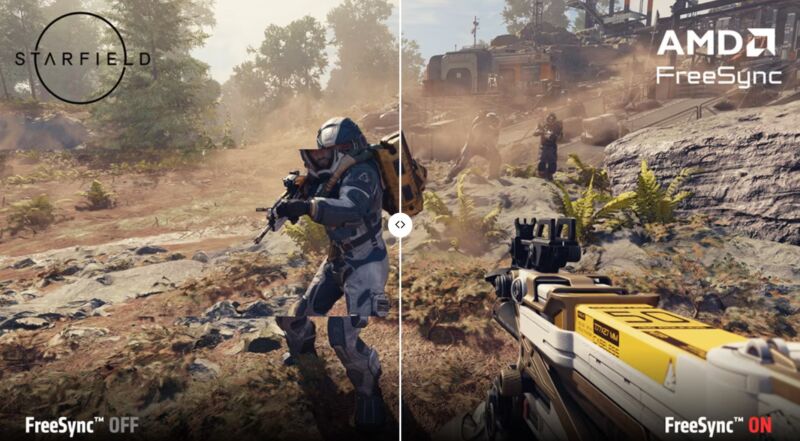 Enlarge / AMD’s depiction of a game playing without FreeSync (left) and with FreeSync (right). (credit: AMD)
Enlarge / AMD’s depiction of a game playing without FreeSync (left) and with FreeSync (right). (credit: AMD)
[/url] AMD announced this week that it has ceased FreeSync certification for monitors or TVs whose maximum refresh rates are under 144 Hz. Previously, FreeSync monitors and TVs could have refresh rates as low as 60 Hz, allowing for screens with lower price tags and ones not targeted at serious gaming to carry the variable refresh-rate technology.
AMD also boosted the refresh-rate requirements for its higher AdaptiveSync tiers, FreeSync Premium and FreeSync Premium Pro, from 120 Hz to 200 Hz.
Here are the new minimum refresh-rate requirements for FreeSync, which haven’t changed for laptops.
Fabian Mohr
I’m really intrigued by this shift in FreeSync certification and the increased refresh-rate requirements. As an indie game enthusiast, I wonder how this will impact the gaming experience on different types of monitors and TVs. Do you think this change will have a noticeable effect on indie games specifically, or is it more geared towards mainstream gaming? I’m excited to see how this evolves!
TacticianPrime89
Hey @Fabian Mohr, I think this FreeSync certification update is mainly aimed at mainstream gaming rather than indie games. Competitive gaming usually benefits from higher refresh rates for a smoother experience, so this shift caters more to serious gamers. It’s cool to see how this tech advancement could affect all types of gaming. Can’t wait to see the results!
CyberVanguard
Hey Fabian Mohr, as someone who’s into tech and modding, I believe this change in FreeSync certification could make a big difference for indie games. Mainstream gaming usually values fast refresh rates and competition, while indies focus on art, storytelling, and unique gameplay. With the new requirements, indie devs may need to tweak their games for better performance on these monitors and TVs. It’ll be cool to see how they adjust and keep delivering awesome gaming experiences for everyone.
ShadowReaper
@Fabian Mohr, Great question! The shift in FreeSync certification and increased refresh-rate requirements could impact indie games too. While mainstream games may benefit, indie games focus on unique art styles and storytelling. A smoother refresh rate can still improve the gaming experience by reducing screen tearing and lag. It will be interesting to see how indie developers adapt to these changes and utilize higher refresh rates in their games. Excited to see how this evolution unfolds!